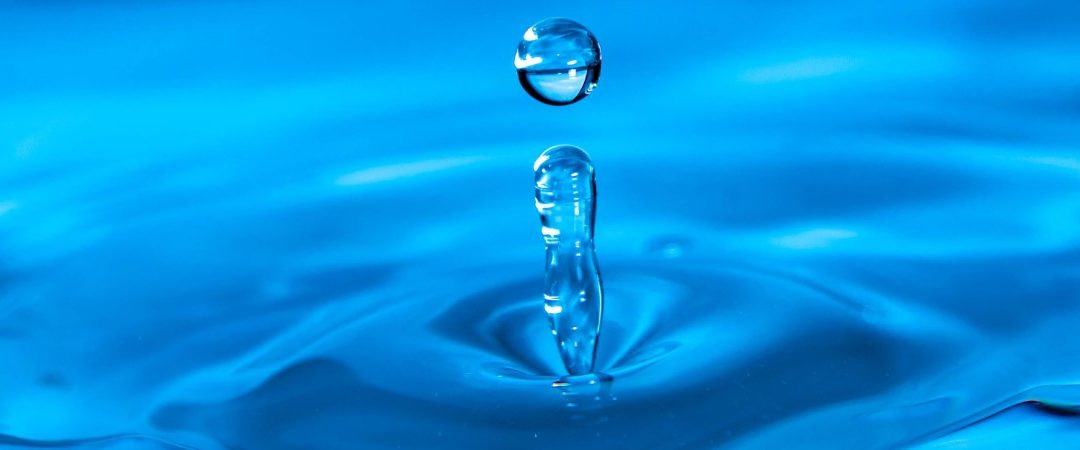What is Blue?
The color blue is one of the most popular colors in the world. It is often associated with feelings of calm and serenity. Blue is also the color of the sky and the ocean, two of the most peaceful and beautiful places on Earth. In color psychology, blue is often seen as a positive color that can represent trust, loyalty, and wisdom. If you are looking for a color that will inspire feelings of peace and relaxation, blue is the perfect choice.

Blue Light
Blue light is a color that is typically associated with sadness or depression. However, blue light is also a color that can have a calming effect. It has been shown to help reduce stress and anxiety levels, and it can also help to improve sleep quality. Blue light is also known to boost cognitive performance and increase alertness. In addition, blue light has been shown to improve mood and increase energy levels. While there are many benefits to blue light exposure, it is important to limit exposure to blue light in the evening hours as it can disrupt the body’s natural sleep cycle.
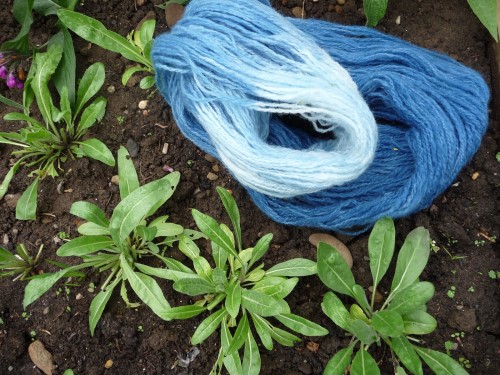
Blue Pigment
Blue pigments are used in a variety of ways, from adding color to paints and inks to creating vibrant tones in fabric dyes. There are many different types of blue pigments, each with its own unique properties. Here are a few examples:
-Ultramarine is a deep blue pigment that has been used in paintings for centuries. It is made from lapis lazuli, a semiprecious stone.
-Cobalt blue is a bright, clear blue pigment that is often used in glassmaking and ceramics. It is made from cobalt oxide.
-Prussian blue is a dark blue pigment that was first used in the 18th century. It is made from iron oxide and potassium hydroxide.
-Indigo is a dark blue pigment that is derived from the indigo plant. It has been used for centuries to color fabrics.

Origin of the word blue?
The word “blue” itself has a long and interesting history. It comes from the Old English word “blæwen”, which means “to blow”. This is likely in reference to the color of the sky on a clear day. Over time, the word “blue” came to be used in reference to other objects that were blue in color, such as blueberries and blue flowers. Today, the color blue is used in many different ways. It is often used in decoration and design, as it is thought to create a feeling of calm and peace. It is also the color of choice for many corporate logos, as it is seen as professional and trustworthy. Whether you see it as a symbol of strength or serenity, there’s no denying that blue is a color with a rich history and lots of meaning.
VALUES
Technical Information about the Color Blue – #0000FF
Blue is one of the most common colors that is seen in the spectrum of visible light. In the form of RGB or Red, Green, and Blue, blue is denoted by “0, 0, 255”. This color has historically been connected to peace and tranquility due to its calming effect on viewers. It is used in many areas today such as logos for companies and websites. More dramatically, blue can also represent sadness or gloom in an artistic context. However blue’s scientific properties provide some interesting technical information; blue has a wavelength between approximately 450 and 475 nanometers which gives it an almost endless array of potential applications.
All Color Value Conversions
| VALUE | CSS | |
|---|---|---|
| HEX VALUES | 0000ff | #0000ff |
| RGB DECIMALS | 0, 0, 255 | rgb(0,0,255) |
| RGB PERCENTAGES | 0, 0, 100 | rgb(0%, 0%, 100%) |
| CMYK | 100, 100, 0, 0 | |
| HSL | 240°, 100, 50 | hsl(240°, 100%, 50%) |
| HSV (OR HSB) | 240°, 100, 100 | |
| WEB SAFE VALUES | 0000ff | #0000ff |
| CIE-LAB | 32.297, 79.188, -107.86 | |
| XYZ | 18.044, 7.218, 95.03 | |
| XYY | 0.15, 0.06, 7.218 | |
| CIE-LCH | 32.297, 133.808, 306.285 | |
| CIE-LUV | 32.297, -9.405, -130.342 | |
| HUNTER-LAB | 26.865, 75.488, -199.778 | |
| BINARY | 00000000, 00000000, 11111111 |
The Color Blue in Nature
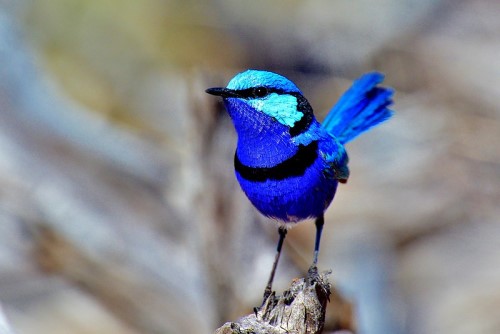
Blue Animals
The color blue is relatively rare in the animal kingdom. One reason for this is that pigments that produce blue colors are not common in nature. However, there are a few animals that have managed to develop a blue hue. The Blue Morpho butterfly is one of the most well-known blue animals. These beautiful insects get their color from light reflecting off of microscopic scales on their wings. Another blue creature is the Blue-ringed octopus, which is found in the waters off of Australia and Japan. This small octopus gets its color from a combination of yellow and black pigments. Some animals also appear to be blue due to the way light reflects off of their fur or feathers. The Blue Jay, for instance, has blue feathers that are actually grayish-brown in color. And while they’re not technically animals, blueberries are also worth mentioning! These little fruits get their color from anthocyanins, which are plant pigments that can also be found in other blue flowers and vegetables.
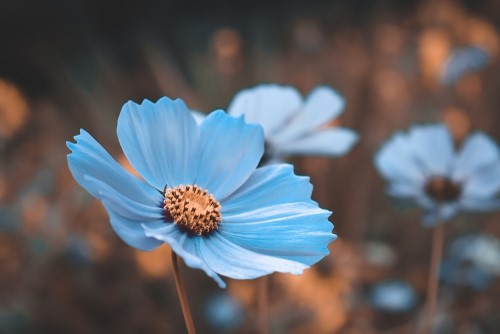
Blue Plants and Flowers
In the world of plants and flowers, blue is a relatively rare color. That’s because blue pigments are not very common in nature. As a result, blue flowers tend to be more expensive than other colors. But for many people, the rarity of blue flowers makes them even more special. Blue flowers can add a touch of elegance to any garden, and they can also help to create a calming atmosphere. If you’re looking for something unique, consider adding some blue plants and flowers to your garden.
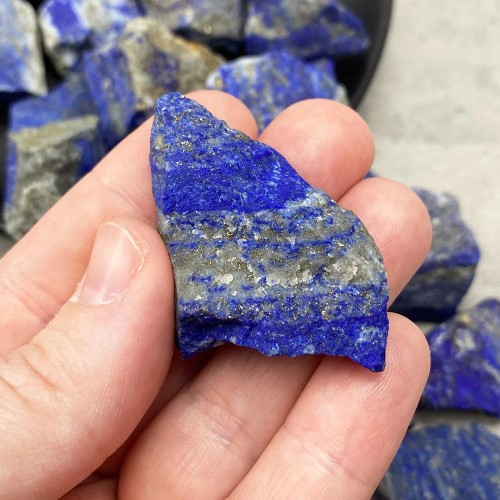
Blue Minerals and Substances
One of the most popular color gemstones is blue. The color blue in gemstones is created by different trace elements. For example, lapis lazuli gets its color from the presence of sulfur. The most popular blue color gemstone is probably the sapphire. Sapphires can be found in many different colors, but the most prized color is blue. While sapphires typically have a blurry or cloudy appearance, the best quality sapphires are completely transparent. Blue diamonds are also very popular, but they are much rarer than sapphires. In fact, blue diamonds make up less than 1% of all diamonds that are mined each year. Because of their rarity, blue diamonds are some of the most expensive gemstones on the market. Other popular blue color gemstones include turquoise, aquamarine, and tanzanite.
The Color Blue in World Cultures

The Color Blue in Europe
Blue has been associated with peace and tranquility for centuries. In Europe, the color blue is often seen as a symbol of stability and order. It is no coincidence that many national flags feature blue as one of their colors. The color blue is also commonly used in corporate logos, as it conveys a sense of trustworthiness and dependability. In recent years, the color blue has become increasingly popular in fashion and home decor. It is seen as a refreshing and soothing color that can help to create a calming atmosphere. Whether you are looking to add a touch of color to your wardrobe or your home, blue is a great option.
Woad is a plant that was used to create the color blue in Europe for centuries. The plants were harvested and the leaves were dried and ground into a powder. This powder was then combined with water or other fluids and applied to fabric, wood, or other materials. The color blue was significant in many European cultures and was often used in ceremonial and religious contexts. In more recent years, the use of woad has declined as synthetic dyes have become more widely available. However, the plant remains an important part of Europe’s history and culture.
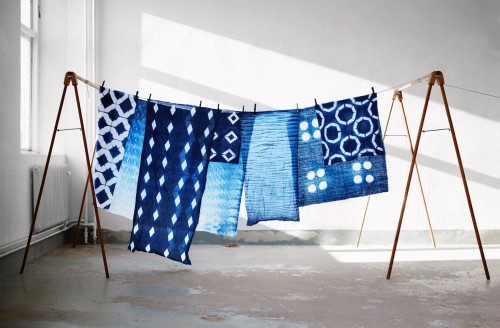
The Color Blue in Asia
The color blue has a long and rich history in Asia. In China, blue is associated with heaven and is often used in decorative art. In Japan, blue is the color of the ocean and symbolizes tranquility. In Korea, blue represents immortality and is often seen in traditional paintings. Blue also has a significant presence in India, where it is considered to be a sacred color. As a result, the color blue holds a special place in the hearts of people across Asia.
India has been producing indigo dye for centuries, and the color blue has long been associated with the country. In fact, the word “indigo” is derived from the Sanskrit word for “blue.” Indigo is a naturally occurring colorant that can be extracted from certain plants. The most common plant used for indigo dye production in India is Indigofera tinctoria. To produce the dye, the leaves of the plant are soaked in water and then fermented. The resulting solution is then strained and used to dye fabric. Indigo has a long history of use in India, and it remains an important part of the country’s culture today.
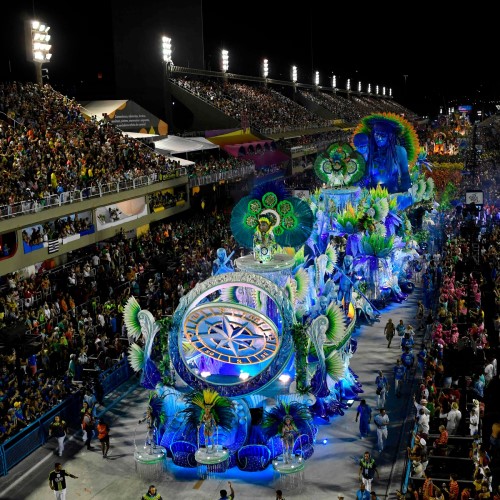
The Color Blue in Latin America
In many cultures, blue is associated with positive values such as trustworthiness, loyalty, and wisdom. However, in Latin America, the color blue carries a more negative connotation. It is often seen as a symbol of sadness and sorrow, and is often associated with death. This is likely due to the fact that blue is the color of the ocean and the sky, which are both vast and empty. They also evoke a sense of loneliness and isolation. For these reasons, blue is not a very popular color in Latin America. When it does appear, it is usually in small amounts or as part of a design that includes other colors.
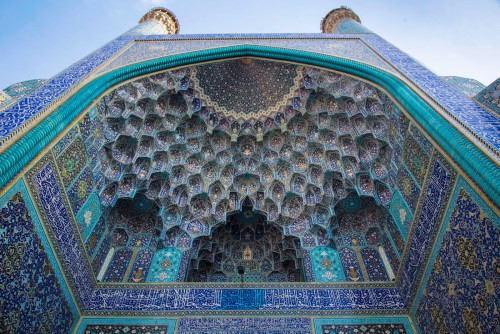
The Color Blue in the Middle East
The color blue has a long and storied history in the Middle East. For centuries, it has been associated with royalty and used to adorn the walls of palaces and mosques. In more recent times, it has become a symbol of national pride, appearing on the flags of countries such as Iraq, Iran, and Turkey. It is also a popular color for decorative items such as lanterns and tiles. Whether viewed as a sign of wealth or piety, the color blue remains an important part of Middle Eastern culture.
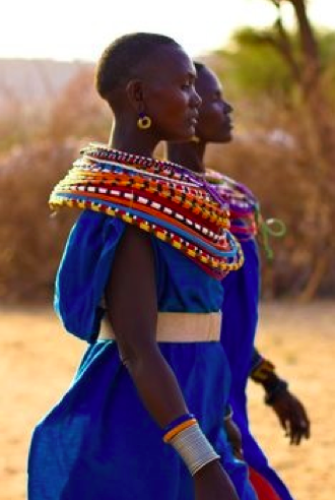
The Color Blue in Africa
The color blue has a long history in Africa. For centuries, the color blue has been associated with royalty and power. In many African cultures, blue is seen as the color of heaven and is used to represent divine power. Blue is also often used to represent water and fertility. In fact, the color blue is so important in Africa that it is often used in traditional rituals and ceremonies. Today, the color blue continues to be an important part of African culture. It is often used in paintings, sculptures, and other works of art. The color blue is also worn by many people as a symbol of strength and power.
The Color Blue in Religion and Psychology
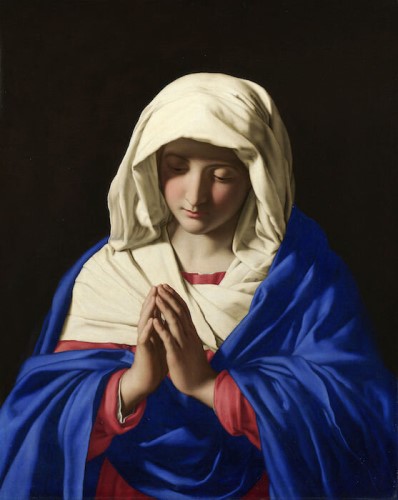
The Color Blue in Christianity
The color blue has been associated with Christianity since the very early days of the religion. In the New Testament, Jesus is often referred to as the “Prince of Peace,” and the color blue is seen as a symbol of peacefulness and tranquility. In addition, the color blue is often used to represent heaven, and it is often used in paintings and illustrations of religious scenes. The color blue is also significant in the Old Testament, where it is often used to represent purity and holiness. In Exodus, for example, the Israelites were instructed to use blue thread in the fringes of their garments as a reminder of God’s laws. Today, the color blue continues to be an important part of Christianity, and it is often used in religious ceremonies and celebrations.
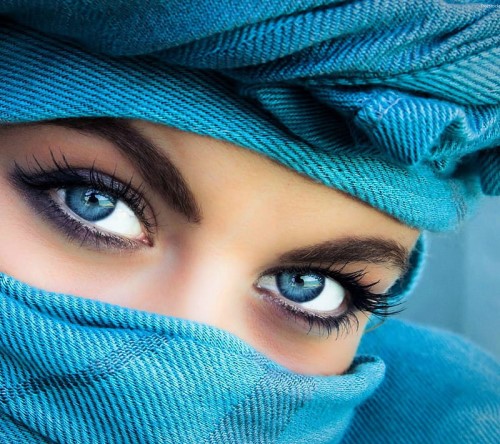
The Color Blue in Islam
The color blue has a long history of significance in many cultures around the world. In Islam, blue is often used to represent paradise and spirituality. The color is deeply associated with the idea of infinity and unity, as well as with peace and serenity. In the Koran, blue is mentioned numerous times as a color that brings comfort and protection. For Muslims, the color blue is a reminder of the infinite nature of God and the endless possibilities of the spiritual realm. It is also a symbol of hope and guidance, instilling faith in those who seek it. Whether it is the deep blue of a clear night sky or the refreshing hue of a cool ocean wave, the color blue has always been revered by Muslims for its beauty and spiritual power.
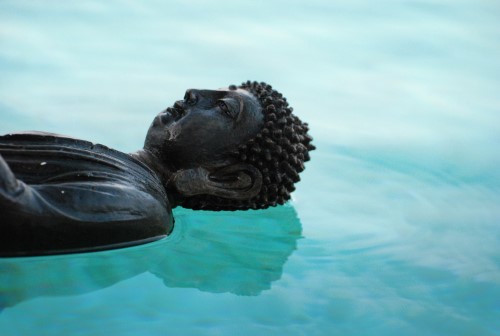
The Color Blue in Buddhism
The color blue is often associated with Buddhism. This is because the color blue is seen as a symbol of peace and tranquility. In addition, the color blue is often used in Buddhist artwork and meditation practices. The color blue can also be used to represent the sky and the ocean, which are both seen as symbols of infinity. Furthermore, the color blue is often used to represent wisdom and spiritual enlightenment. In Buddhist teaching, the color blue is said to remind us of our true nature, which is Pure Awareness. The color blue can help us to achieve inner peace and to connect with our true nature.

The Color Blue in Hinduism
The color blue holds a special significance in Hinduism. It is often associated with the sky or the ocean, and it is considered to be a color of healing and peace. The color blue is also linked to Krishna, one of the most popular gods in Hinduism. Krishna is typically depicted as blue-skinned, and he is often shown wearing blue clothing. In many Hindu traditions, blue is seen as a sacred color, and it is often used in religious ceremonies and rituals. For example, some Hindus believe that painting their bodies with blue paint will protect them from evil spirits. Others wear blue clothing to show their devotion to Krishna. Whether used in ritual or daily life, the color blue plays an important role in Hinduism.

What does blue mean in psychology?
The color blue has long been associated with feelings of calm and serenity. In fact, studies have shown that the color blue can have a calming effect on the nervous system, helping to lower blood pressure and heart rate. Blue is also thought to promote concentration and productivity, which is why it is often used in offices and classrooms. Additionally, the color blue is often seen as a symbol of trustworthiness and responsibility. This may be why many businesses use blue in their branding, as it conveys a message of dependability and stability. Whatever the meaning, it is clear that the color blue has a significant impact on our psychological state.
Notable Shades of the Color Blue

Navy
One of the most popular colors today is navy. Navy is a color that is associated with many different things. It is seen as a color of authority and power. It is also seen as a color of sophistication and intelligence. Navy can also be seen as a color of stability and reliability. All of these qualities make navy a color that is very popular in the business world. It is also a color that is popular in the military. Navy blue is the color of the United States Navy. It is also the color of the British Royal Navy. Navy blue has been used as a color in militaries for centuries because it is seen as a color that instills confidence and discipline in those who wear it.

Sky Blue
The sky is one of the most visible and recognizable colors in the world. It’s color is often described as sky blue, although it can appear to be a range of different colors depending on the time of day and weather conditions. The sky gets its blue color from the scattering of sunlight by tiny particles in the atmosphere. This scattering occurs more readily with shorter wavelength light, such as blue light, than with longer wavelength light, such as red light. As a result, when we look up at the sky on a clear day, we see primarily blue light. However, when clouds are present or when the sun is low on the horizon, other colors may be more evident. In addition to sky blue, the sky can also appear to be red, orange, or yellow during sunrise and sunset.

Sapphire
The color sapphire is most commonly associated with the color blue. Sapphires can range in color from very light blue to very dark blue, and they may also contain hints of other colors, such as green or purple. The most prized Sapphires are those that are vivid blue in color. Sapphires are found in a variety of locations around the world, including Sri Lanka, Madagascar, and Australia. In the United States, Sapphires are mined in Montana. Sapphires have been used in jewelry for centuries and are especially popular as engagement rings. The cost of a Sapphire can vary depending on its color, quality, and size.

Cobalt
Cobalt is a color that is close to blue but not quite navy. It has a richness to it that makes it stand out. Cobalt can be deep and dramatic or light and airy depending on how it is used. It is a color that works well with other colors, especially those in the same family such as blue and navy. Cobalt is a color that is associated with loyalty and trustworthiness. It is also said to represent wisdom, courage, and strength. In the world of fashion, cobalt is a color that can be both sophisticated and playful. It is a color that turns heads and makes a statement. Whether you are looking to make a bold impression or simply add a pop of color to your wardrobe, cobalt is the perfect choice.

Cerulean
Cerulean is a color in the blue family. It is named after the color of the sky on a clear day. The color is also sometimes called sky blue or baby blue. Cerulean is light and airy, and it is often used to represent calmness and serenity. The color is often associated with the ocean and the sky. It is also frequently used in interior design, as it can help to create a feeling of space and openness. Cerulean is a versatile color that can be used in a variety of settings and context.

